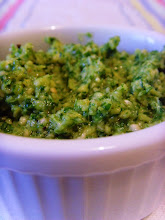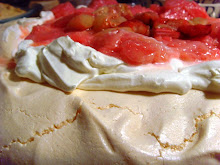 On Friday night, I enjoyed a lamb tagine. This in itself is surprising. Yet more surprising is the fact that this is the second time in two weeks that I have enjoyed a lamb tagine. The surprise lies in the 'enjoyment' factor. You see, I always claim to dislike Moroccan food. How can I sweep an entire nation's cuisine under the carpet, I hear you ask in horror? Someone interested in food could surely not be so short-sighted.
On Friday night, I enjoyed a lamb tagine. This in itself is surprising. Yet more surprising is the fact that this is the second time in two weeks that I have enjoyed a lamb tagine. The surprise lies in the 'enjoyment' factor. You see, I always claim to dislike Moroccan food. How can I sweep an entire nation's cuisine under the carpet, I hear you ask in horror? Someone interested in food could surely not be so short-sighted. My dislike of Moroccan food stems from two of my major food 'hates'. There are not many foods that I dislike but two of them are fairly deeply linked with the food of Morocco. Horror number one is the combination of fruit and meat. There are exceptions (pork with apple sauce, duck with plum sauce). But not very many. Dried fruit is a particular issue. I love it in cakes and pastries, but stir a few sultanas into my coleslaw and I come over all funny. Put pineapple on top of some ham on a pizza and I turn a whiter shade of pale. So you see, whilst I love the idea of a slow-cooked lamb casserole simmered in spicy juices, the addition of sultanas, dates or (heaven forbid) apricots sends shivers down my spine.
Food hate number two is mint. I can't stand it. In any form. Even a tiny spring garnishing my restaurant dessert is too much. So, couscous with handfuls of chopped herbs stirred through? Delicious. Throw mint into the equation though, I'm in foodie hell.
However, I am taking it all back. Did you hear that? I am TAKING IT ALL BACK. I am of course ridiculous in thinking that all Moroccan food involves dried fruit and mint. I knew that already. But secondly, I have to congratulate my dear friend and hostess with the mostess, Joni, for cooking me a tajine that I actually enjoyed. And, what is more, it involved dried apricots. And yes, I really enjoyed it. So much so that I actually found myself asking for the recipe. So much that I actually found myself cooking it for myself.
The heady blend of spices complemented the lamb beautifully - it was so gorgeously aromatic.
 I am not sure how 'authentic' the recipe is but it is well worth trying. As you can imagine, I am no expert on Moroccan food. It does have a fruity sweetness to it (next time I think I'll use a little less honey) but it is really very good. Joni's version was rather better than mine - she cooked it at a lower heat for longer and she also added more spice. I have put in the quantities specified in the recipe she gave (I know she added more) and I leave it to you to decide how spicy you want it. I added a little more too, but next time I'll definately up the chilli and paprika in particular.
I am not sure how 'authentic' the recipe is but it is well worth trying. As you can imagine, I am no expert on Moroccan food. It does have a fruity sweetness to it (next time I think I'll use a little less honey) but it is really very good. Joni's version was rather better than mine - she cooked it at a lower heat for longer and she also added more spice. I have put in the quantities specified in the recipe she gave (I know she added more) and I leave it to you to decide how spicy you want it. I added a little more too, but next time I'll definately up the chilli and paprika in particular.
I served the tagine with couscous with huge handfulls of chopped flat-leaf parsley and coriander stirred through. For those less fussy (and more authentic), throw in chopped mint! Thanks Joni for a great recipe.
Joni's Lamb Tajine
Serves 6-8
(not sure where the original recipe came from - anyone who recognises it, do please let me know so I can credit appropriately)
 1 tbsp sunflower oil
1 tbsp sunflower oil900g neck fillet of lamb, or boneless shoulder or leg
2 large onions
3 fat garlic cloves, crushed
175g dried apricots, quartered
1 tsp ground ginger
1tsp ground cinnamon
1tablespoon ground paprika
1/8 tsp hot chilli powder
1 generous pinch safron soaked in 3 tblsp hot water
2 tbsp honey
800g tinned chopped tomatoes
Half a pint of stock (approx.)
chopped parsley and coriander to garnish
1. Pre-heat oven to 160C.
2. Heat oil in large casserole or tagine and brown lamb in batches. When nicely browned, remove with slotted spoon and put on one side.
3. Add onions and garlic to pan on a low heat, stir and then cover for around 10-15 minutes until soft.
4. Increase heat and add spices including saffron and soaking liquid - give a good stir.

5. Add apricots, honey, tomatoes and lamb. Add some of the stock to loosen the mixture - you might want to add just a little and top it up during the cooking. You don't want it too 'saucy' but equally you don't want it to dry out.
6.Bring to the boil, season with salt and pepper, cover and cook in the oven for at least two hours. Garnish with lots of parsley and coriander and serve with couscous.
 Notes - Next time, I think I might add some vegetables to the tagine - probably courgette and peppers.
Notes - Next time, I think I might add some vegetables to the tagine - probably courgette and peppers.































































